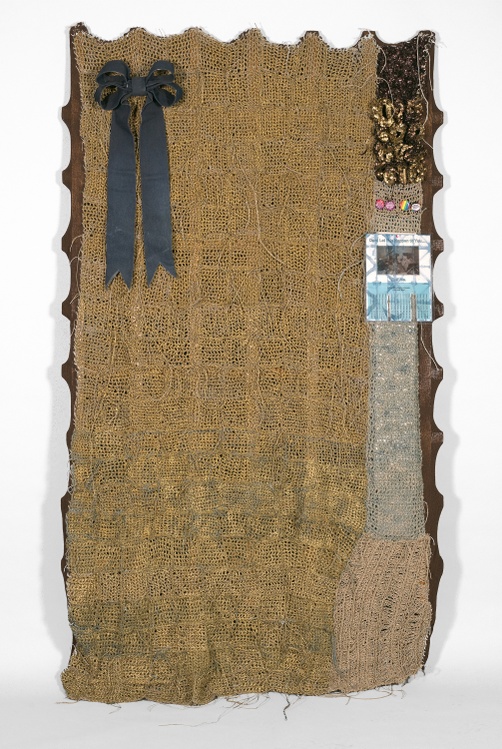On November 16, 2018, Skidmore students Evan Hasencamp ’20 and Julia Rinaolo ’19 interviewed artist Josh Faught about his work Housecleaning, 2009/2018, from the Tang Teaching Museum collection.
This interview was part of a series of interviews with artists conducted by Skidmore students in the Art History course “The Artist Interview,” led by Dayton Director Ian Berry.
Julia Rinaolo ’19
What is your first memory of art?
Josh Faught
The strongest memory I have of seeing art in a museum space was probably when I was in high school or junior high school and I went to the Tate in London. I saw this incredible exhibition of Mark Rothko’s paintings. And it was the first time that I ever felt truly emotional in front of a work. The lights were dimmed. These paintings glowed, and I sat there and just wept in front of this painting. It was a really beautiful, moving experience that I still can’t get out of my head.
Evan Hasencamp ’20
In terms of the materiality of your work, what brought you to combine so many different materials? You often combine painted elements or sculptural elements; in the case of Housecleaning, there are buttons, a flyer, and plaster.
JF
I’ve definitely benefited from looking at the work of other people. When I first started making work in textiles, I was highly influenced by the Art Fabric Movement of the 1960s and 1970s as well as the Pattern and Decoration Movement. I still am. These artists were thinking about textiles as surrogates for political activity or for a political spirit. By extension, I was thinking about feminist theory and queer theory and ways that I could merge or create a kind of historical fantasy around those works. I could think about if those works were made today, how would they look? How would they represent politics? How would they represent the ambiguity or the ambivalence of certain political ideologies?
And so that was where I got permission to make the work that I make, for lack of a better phrase. But there are so many different influences. Miriam Schapiro’s work is fascinating to me because it is really garish and really ugly and it stayed ugly for a long time. That is hard to do as an artist. It’s hard to make something that stays ugly for decades because trend has this way of turning everything around into something that’s beautiful or trendy or dazzling. I think that’s a strength of her work. I aim for some ugliness in my work. Part of my strategy as an artist is to try and make work that doesn’t look great on Instagram because I really believe in the importance of visiting artwork and experiencing it in real life and having a bodily relationship with an object. I always think that I’m not ready to let a work leave my studio until I’m embarrassed by it. That’s when it’s ready to go.
JR
I’ve never heard an artist say that before! How does your sexuality inspire the work that you make?
JF
I came of age during the AIDS crisis, and I was young enough that I didn’t know anybody that was dying, but I was old enough to think that if you came out as a gay man, you were signing your own death certificate. My family responded by saying, “We support you, but you’re going to die.” There was always this specter of death that was looming around queerness for me.
Now we’re in a different place in terms of how AIDS functions. It is a different conversation today than it was in the 1990s. A lot of the things that were created and the pop culture that dealt with queerness and gay male sexuality in the 1990s feels hopelessly out of date, but it really taught me to be who I am. I think about the construction of sexuality as it relates to a generation and to visibility or illegibility.
In my recent work, I’m thinking about modes of decoration and how they could be considered gay or queer. I found this book called The Unofficial Gay Manual that was printed in the mid-1990s. It’s a jokey, humorous book. It says every gay man should have a Sinead O’Connor cassette. It’s very tongue-in-cheek, but in the back of the book are legitimate social resources, financial resources, places where you can live if you get kicked out of your house, health resources. So it’s both earnest and snarky at the same time, and that’s a strange sentiment. In the middle of this book are gatefold images, hand-drawn illustrations of what a gay living room is supposed to look like, or a gay kitchen or a gay bedroom. And a lot of the things listed are things that, at this point, anybody would have in their house. It’s totally illegible from a contemporary standpoint. But at that particular moment, this was a process of signification of thinking about how objects or gay trappings speak to the inhabitant, how objects speak queerly. Now we’re in this place where I don’t know if there’s such a one-to-one signification anymore.





